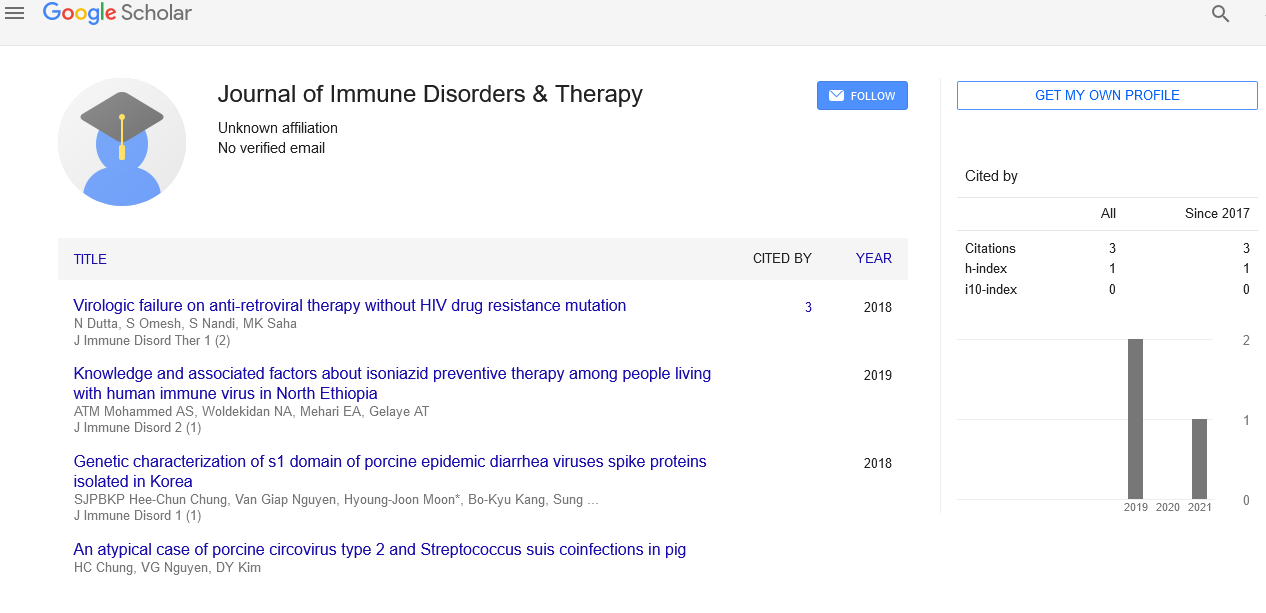Mucosal and Regional Immunology
Received: 03-Dec-2021 Accepted Date: Dec 17, 2021; Published: 24-Dec-2021
This open-access article is distributed under the terms of the Creative Commons Attribution Non-Commercial License (CC BY-NC) (http://creativecommons.org/licenses/by-nc/4.0/), which permits reuse, distribution and reproduction of the article, provided that the original work is properly cited and the reuse is restricted to noncommercial purposes. For commercial reuse, contact reprints@pulsus.com
Abstract
Editorial
The mucosal insusceptible framework has been named the “nearby resistant framework,” a term that infers provincial repression and limits its significance. Truly, the outside climate, which incorporates the inhabitant, profoundly complex mucosal microbiota, antigens from food or breathed in air, ecological xenobiotics, and likely microorganisms and their items, has driven the turn of events and excitement of the whole resistant framework during advancement as well as ontogeny-and keeps on doing as such in regular day to day existence. Ecological antigens have prompted the essential dispersion of cells engaged with the take-up, handling, and show of antigens, as well as the formation of humoral and cell parts of natural and explicit insusceptibility, across the mucosae. In the mucosal safe framework, quantitative examination of macrophages, dendritic cells (DC), T and B lymphocytes, natural lymphoid cells (ILCs), and different heredities shows their predominant numbers as well as phenotypic and useful fluctuation. These cells team up to keep the gigantic surge of ecological antigens under control without risking the mucosal boundary’s respectability or overwhelming the insusceptible framework. This is achieved through facilitated collaborations between safe cells and phenotypically and practically fluctuated epithelial cells that cover the mucosal layers’ huge surface regions. Organisms are kept from tainting the body’s wet contacts with the outer climate by the mucosal resistant framework, which dodges provocative reactions. It works with secretory immunoglobulin A (sIgA) and immunoglobulin G1 (IgG1), which are delivered in characteristically coordinated mucosal-related lymphoid tissues in the gastrointestinal, respiratory, and renal frameworks, as well as the female and male conceptive frameworks and the visual surface framework. To emit immunoglobulins, epithelial cells in the lacrimal organs, conjunctiva, and seepage framework utilize an extraordinary transcytotic device, yet they likewise need to keep their basic stromal spaces as specialties for IgA+ plasmablast development and plasmacyte endurance. In both the inductive and effector locales, changing development factor assumes a critical part. The mucosal safe framework starts to create in the belly as soon as 40 days, and when the child is conceived, every one of the framework’s parts are set up and prepared to react to antigenic attack. Many variables impact youth advancement, including maternal pressure, taking care of examples, the mucosal microbiota, inoculation, healthful status, sickness, and a large number of ecological allergens. Around the age of five to seven years, mucosal insusceptible capacity arrives at that of grown-ups. There is some proof that proposes that the improvement of mucosal resistance in youth is connected to infection weakness sometime down the road, however further examination is required. There are an assortment of elements that may adjust and think twice about immunocompetence in grown-ups. Nourishing state, contamination, and mental and actual pressure are among them. Despite the fact that there is some deficiency of intrinsic protections in the old, the obtained mucosal invulnerable reaction stays able. Most antigen-explicit memory T cells are found in nonlymphoid organs after contamination. During preparing, tissue-explicit programming makes T lymphocytes move to the legitimate tissue, advancing the foundation of tissue-inhabitant memory in organs like the gastrointestinal mucosa and skin. Changing development factor (TGF)- intervened actuation of the E-cadherin receptor CD103 and downregulation of the chemokine receptor CCR7 are two instruments that control the maintenance of tissue-inhabitant memory T cells. Inside organs, like the neurological framework, and boundary tissues, like the mucosa and skin, benefit from these courses. The memory T cells that live on these surfaces work as a first line of safeguard against contamination, so sorting out what controls their arrangement is urgent to understanding organ-based invulnerability.
Acknowledgement
The authors are grateful to the journal editor and the anonymous reviewers for their helpful comments and suggestions.
Conflict of Interest
The authors declared no potential conflicts of interest for the research, authorship, and/or publication of this article.





